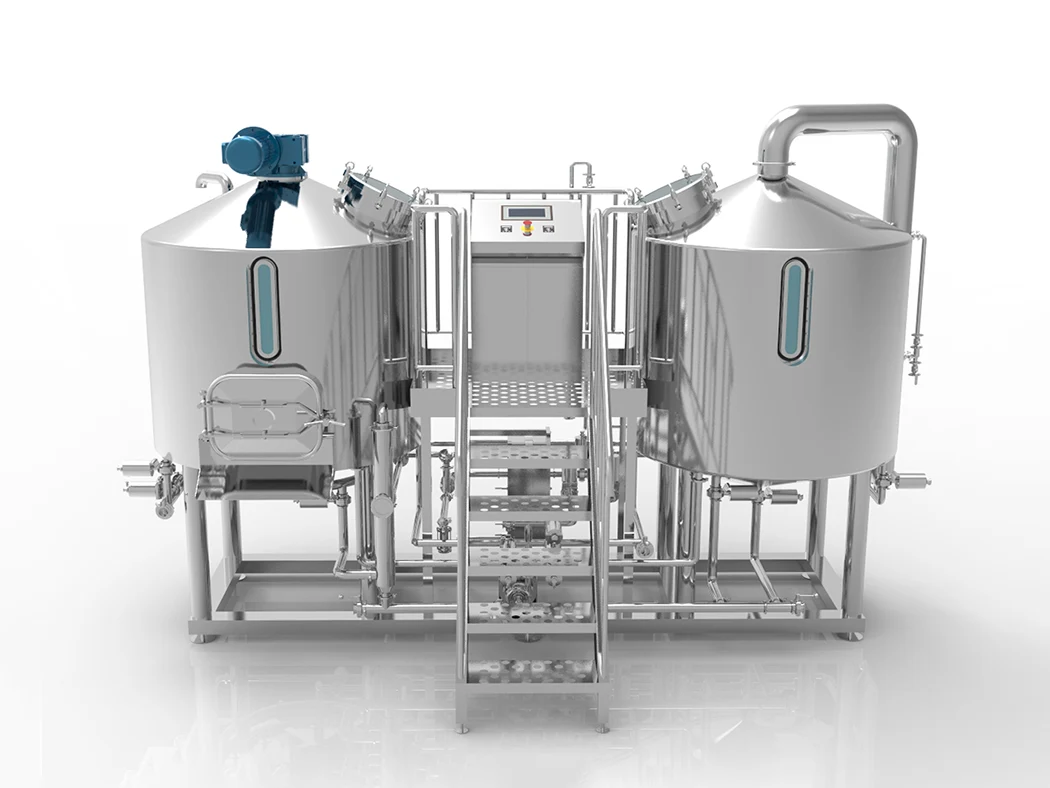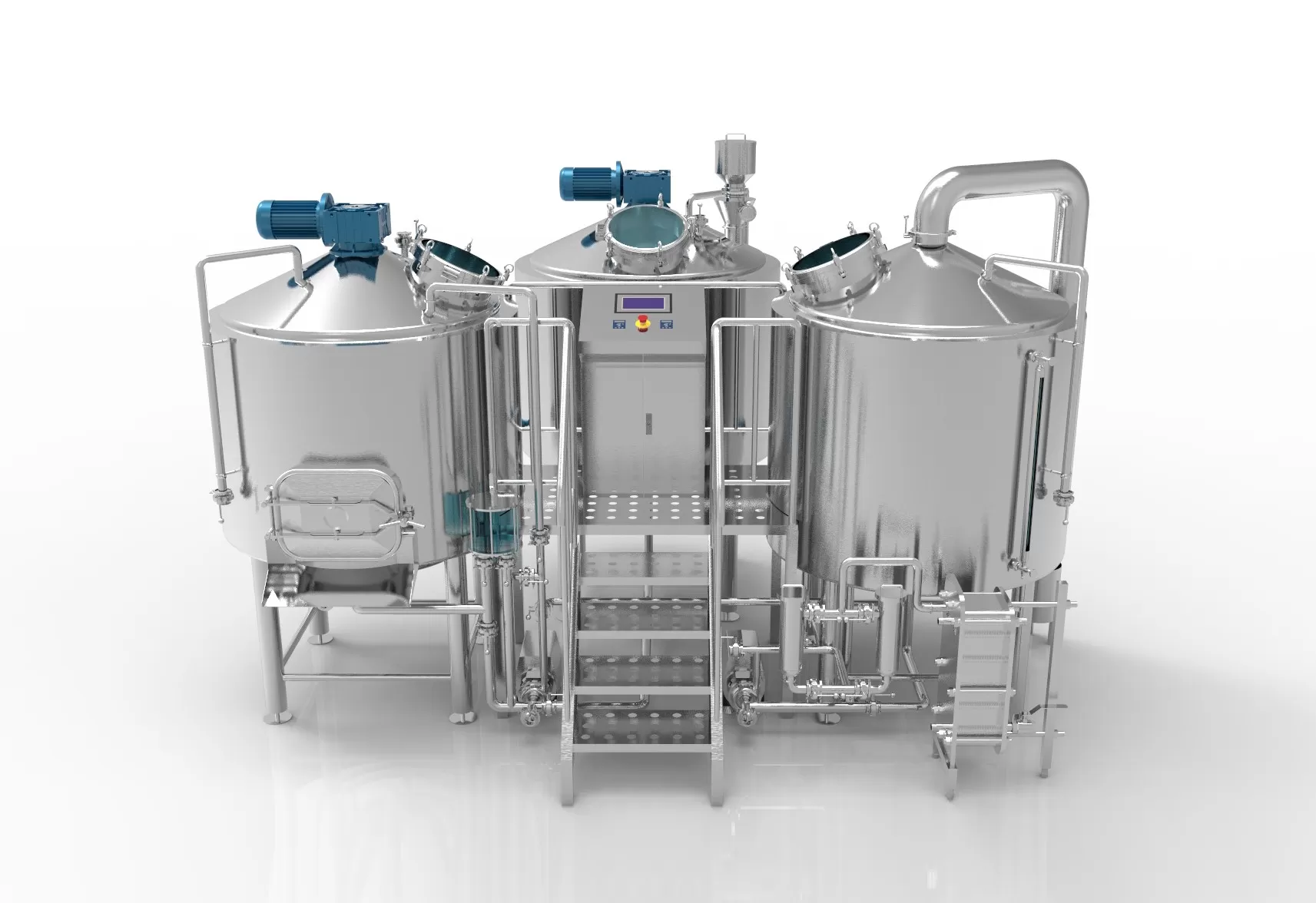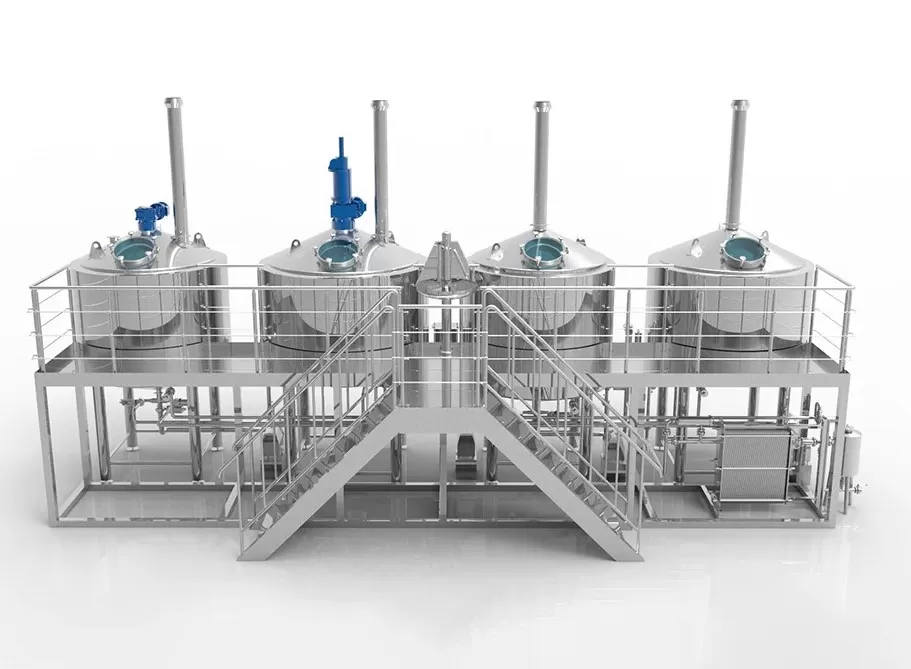Bier ist mehr als nur ein Getränk. Hinter jedem kalten Bier steht eine Mischung aus Wissenschaft, Handwerk und der besten Ausrüstung. Für jede Brauerei, ob groß oder klein, macht die richtige kommerzielle Brauereiausrüstung den entscheidenden Unterschied. Wenn Sie frisches Bier, einen hohen Ausstoß und einen zuverlässigen Geschmack wünschen, sind Ihre Geräte entscheidend. Der Markt für Brauereianlagen boomt, erreicht 20,8 Milliarden Dollar im Jahr 2023 und dürfte bis 2030 dank moderner Brauereitrends und Automatisierung sogar noch weiter ansteigen.
Aber große Entscheidungen bringen oft große Sorgen mit sich. Wie fängt man an, was kauft man, und wie vermeidet man kostspielige Fehler? Hier sind Ratgeber und vertrauenswürdige Partner am wichtigsten. Stellen Sie sich eine Ausrüstung vor, die gut funktioniert, sich in Ihren Arbeitsablauf einfügt, jahrelang hält und von einem kompetenten Team unterstützt wird - das sind die Grundvoraussetzungen für jede nachhaltige Brauerei.
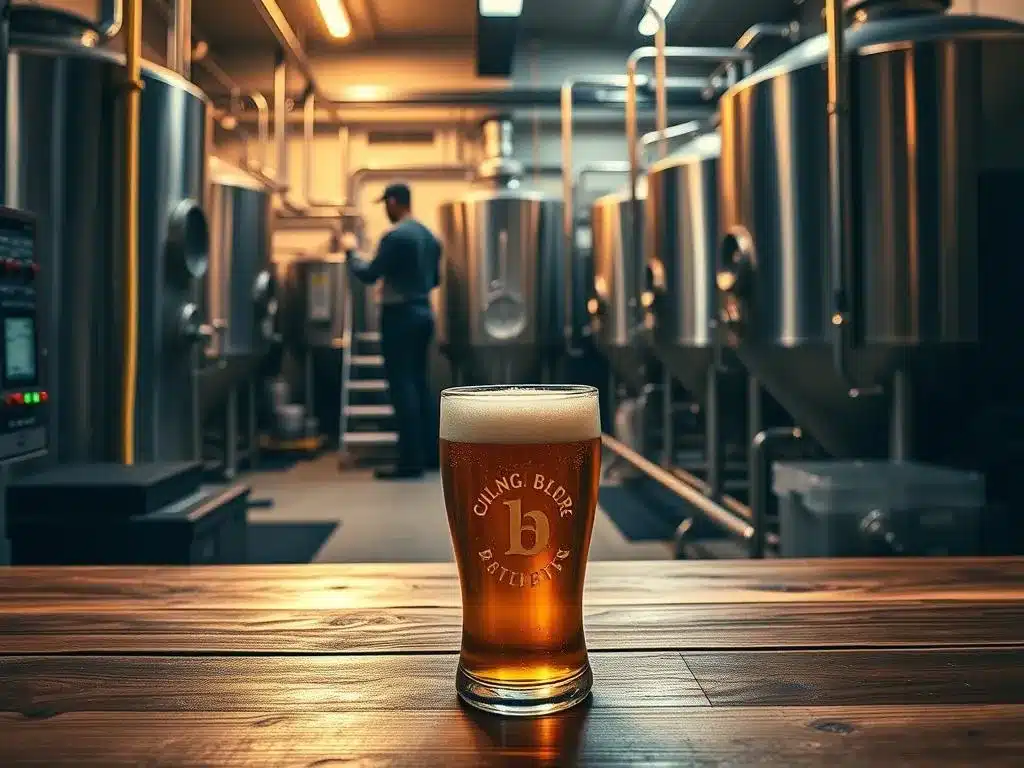
Unverzichtbare kommerzielle Brauereianlagen
Die Gründung einer Brauerei kann verwirrend sein. Es gibt so viele Maschinen, Tanks, Leitungen und Teile. Wenn Sie die falschen Teile kaufen, schmeckt Ihr Bier vielleicht nicht richtig, oder Ihre Kosten steigen. Eine schlechte Einrichtung kann zu Verzögerungen beim Brauen, mehr Abfall und Geldverlusten führen.
Ausrüstungsliste
Jede Brauerei benötigt für den Start einige grundlegende Dinge. Hier sind die wichtigsten Ausrüstungsgegenstände für gewerbliche Brauereien:
| Ausrüstung | Was es bewirkt |
|---|---|
| Maischebottich | Mischt die Körner mit heißem Wasser, um mit dem Brauen zu beginnen |
| Kessel kochen | Wo die Würze mit Hopfen gekocht wird |
| Gärbehälter | Wo die Hefe die Würze in Bier verwandelt |
| Heller Biertank | Zur Klärung und Karbonisierung des Biers |
| Wärmetauscher | Kühlt heiße Würze schnell auf hefefreundliche Temperaturen |
| Glykol-Kühlsystem | Hält den Tank auf der richtigen Temperatur |
| Verpackungslinie | Abfüllen des Biers in Flaschen, Dosen oder Fässer |
Tipp: Gute Geräte aus hochwertigem Edelstahl (wie 304 oder 316L) können bei guter Wartung über 25 Jahre halten.
Wie man die richtige Ausrüstung auswählt
Der Kauf von Brauereianlagen ist eine große Investition. Die falsche Wahl bedeutet Geldverschwendung und Frustration. Außerdem müssen Sie die Größe, das Material, die Sicherheitsvorschriften und den Automatisierungsgrad berücksichtigen. Die Preise variieren stark, und es tauchen immer wieder überraschende Kosten auf.
Was kann schiefgehen?
Manche Brauereien geben die Hälfte ihres Budgets nur für Tanks aus und haben am Ende nicht genug Braukapazität. Andere verzichten auf eine angemessene Automatisierung, was zu mehr Ausfallzeiten und Verschwendung führt. Wussten Sie, dass das Versäumnis, Dichtungen oder Pumpen zu ersetzen, bis zu 30% an Ausfallzeiten in der Brauerei verursacht [Tabelle zur Lebensdauer der Anlagen]?
Zu prüfende Schlüsselfaktoren
- Größe und Kapazität der Brauerei
- Denken Sie an die Jahresproduktion. Nano- oder Mikrobrauerei? Beginnen Sie mit einer 300L- oder 500L-Kleinserienanlage.
- Große Ziele? Entscheiden Sie sich für ein kommerzielles 2000L oder 3000L System. [Siehe dies 1000L Small Batch Brausysteme für ein Beispiel].
- Materielle Angelegenheiten
- Verwenden Sie rostfreien Stahl 304/316L. Er ist rostbeständig und hält länger.
- Langlebige Tanks sorgen für jahrelangen Seelenfrieden.
- Automatisierung
- Moderne Brauereien verwenden PLC (Programmable Logic Controller)-Panels und IoT-Sensoren.
- Selbst eine teilweise Automatisierung kann den Abfall um bis zu 12% und die Ausfallzeiten um bis zu 15% reduzieren [ROI-Tabelle Automatisierung].
- Einhaltung der Vorschriften
- Wählen Sie NSF/ISO-zertifizierte Geräte - das schützt Sie und kann Ihre Versicherungsprämien um 10-15% [Konformitätstabelle] senken.
- Kostenspannen
- Rechnen Sie mit Ausgaben von $100.000 für kleine Anlagen bis zu über $1 Million für Großbrauereien [Kostenaufschlüsselungstabelle].
- Leasing ist eine Option: Sie zahlen $3.000-$10.000 pro Monat für mittelgroße Systeme.
- Qualifikationen des Anbieters prüfen
- Garantie (Industrienorm: 3 Jahre auf Tanks, 1 Jahr für Nebenaggregate).
- Unterstützung nach dem Kauf: Servicezentren weltweit bedeuten weniger Ausfallzeiten.
| Faktor | Warum es wichtig ist | Häufiger Irrtum |
|---|---|---|
| Größe | Zu klein, kann nicht wachsen; zu groß, verschwendetes Kapital | Keine Planung für Wachstum |
| Einhaltung der Vorschriften | Erfüllt rechtliche und sicherheitstechnische Anforderungen | Kauf von nicht lizenzierten Geräten |
| Automatisierung | Reduziert Fehler und spart Zeit | Alles von Hand machen |
Top-Hersteller kommerzieller Brauereianlagen
Die Auswahl eines Lieferanten ist schwierig. Der falsche Anbieter bedeutet lange Lieferzeiten, keine Unterstützung oder schlechte Qualität. Große Unternehmen wie GEA Group und Alfa Laval genießen weltweites Vertrauen, bieten aber möglicherweise nicht den maßgeschneiderten Service, den kleinere Brauereien benötigen.
Was kann schiefgehen?
Sie können billig einkaufen, aber später bezahlen - mehr Ausfälle, kurze Lebensdauer der Geräte und schwer zu findende Teile. Mehr als ein Viertel der kleinen Brauereien gab an, dass das Fehlen einer Garantie oder eines Kundendienstes ihr größtes Bedauern ist.
Wodurch zeichnet sich ein guter Gerätehersteller aus?
- Erfahrung und Fachwissen: Unternehmen, die wie Micet auf eine lange Tradition in Forschung und Entwicklung zurückblicken können, sind weniger geneigt, an der falschen Stelle zu sparen.
- Personalisierung: Nicht jede Brauerei ist gleich. Individuelle Lösungen sorgen dafür, dass Sie klein anfangen, wachsen oder sich anpassen können.
- Unterstützungsnetzwerk: Die besten Marken bieten weltweite Servicezentren und Agenten, so dass Ausfallzeiten selten sind.
| Marke | Anteil/Stärke | Am besten für |
|---|---|---|
| GEA-Gruppe | 22% Marktanteil; robuste Systeme | Großbrauereien |
| Alfa Laval | Führende Wärmetauscher, Verpackungen | Energieeffizienz |
| BrauKon | Hochwertige deutsche Technik | Maßgeschneiderte Setups |
| Micet | 15+ Jahre, 1000+ erfolgreiche Fälle | Maßgeschneidert, global, bewährt |
Micet bietet Forschung und Entwicklung, Produktion und Vertrieb an einem Ort, mit Entwicklungsdienstleistungen, kundenspezifischer Fertigung und Kundendienstbüros in über 12 Ländern. Das bedeutet, dass jede Brauerei, ob neu oder expandierend, Beratung und Unterstützung in ihrer Nähe hat. Mit einer 3-Jahres-Garantie auf den Tank und einer 1-Jahres-Garantie auf die Peripheriegeräte können sich die Käufer sicher sein.
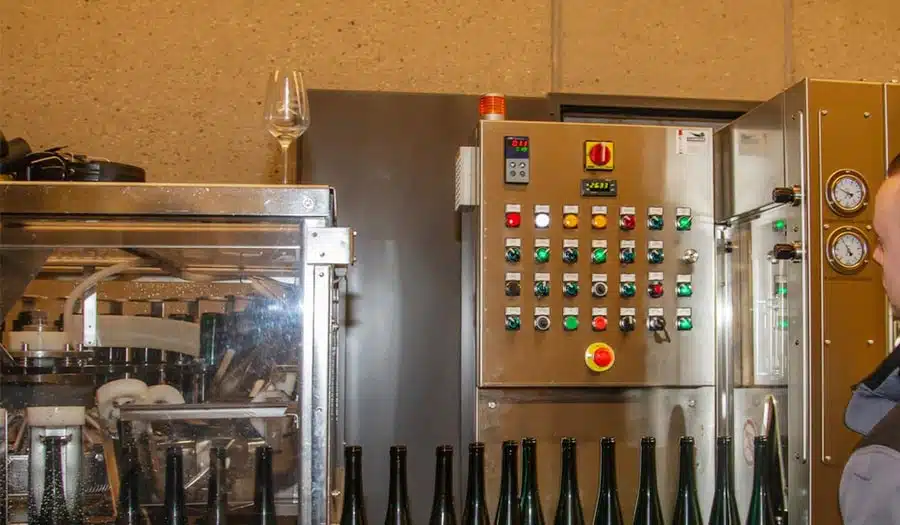
Strategien zur Kosteneinsparung & ROI
Der Betrieb einer Brauerei ist teuer. Die Rechnungen für Versorgungsleistungen stapeln sich. Die Anlagen verbrauchen viel Energie und Wasser. Wenn Sie sich jetzt falsch entscheiden, werden Sie jeden Tag mehr bezahlen.
Wo verlieren die Brauereien Geld?
- Alte, ineffiziente Anlagen verbrauchen mehr Strom. Ein typisches Gebräu verbraucht 5-10 kWh pro Fass.
- Verpackungsmüll und Ausfallzeiten schmälern den Gewinn
- Verpasste Einsparungen: Viele ignorieren Wärmerückgewinnung, Solarenergie oder Recycling, obwohl sich diese in 2-5 Jahren amortisieren.
Intelligente Wege zum Sparen und zur Steigerung des ROI
- Modulare Ausrüstung: Klein anfangen, schnell aufstocken - modulare Systeme können die Anlaufkosten um 35% senken [Tabelle der Fallstudie].
- Energieeffizienz: Hinzufügen von Wärmetauschern, Sonnenkollektoren und Wasserrecycling.
- Stone Brewing sparte allein durch eine bessere Wärmerückgewinnung $120.000/Jahr.
- New Belgium hat den Wasserverbrauch um 20 Millionen Gallonen/Jahr gesenkt.
- Erwägen Sie eine gebrauchte Ausrüstung: Kaufen Sie bei vertrauenswürdigen Anbietern, um Kosten zu sparen, aber nur, wenn sie Support und Garantien bieten.
Aktionsfähige Tabelle: Kostenzuweisung einer modernen Brauerei
| Artikel | % der Einrichtungskosten |
|---|---|
| Sudhaus | 45% |
| Gärung | 25% |
| Verpackung | 20% |
| Versorgungsunternehmen | 10% |
Bewährte Praktiken für Installation und Wartung
Viele Brauereien tun sich schwer mit der Installation, der Einrichtung und der alltäglichen Reinigung. Wenn die Dinge nicht richtig eingestellt sind, kann es zu kostspieligen Ausfällen und Verschüttungen kommen.
Risiken durch mangelhafte Wartung
- Verstopfte Leitungen, verschmutzte Tanks und undichte Rohre beeinträchtigen die Qualität Ihres Biers und die Konsistenz Ihrer Chargen.
- 30% der Ausfallzeiten sind darauf zurückzuführen, dass grundlegende Teile nicht ersetzt wurden.
Einfache Schritte für den richtigen Weg
- Einrichtung
- Achten Sie auf einen Grundriss, der eine einfache Reinigung und Erweiterung ermöglicht.
- Bedarf an Versorgungsleistungen: Vergewissern Sie sich, dass Ihr Raum über ausreichend Strom, Wasser und Abflüsse verfügt.
- Wartung
- Verwenden Sie Clean-in-Place (CIP)-Systeme für eine schnelle, regelmäßige Tankreinigung.
- Halten Sie gängige Ersatzteile bereit (Pumpen, Dichtungen, Ventile).
- Entwickeln Sie eine Routine: Planen Sie Kontrollen ein, bevor sie zu kostspieligen Reparaturen führen.
Suchen Sie eine Anleitung zu verschiedenen Systemen? Siehe unser 10BBL 2-Gefäß-Mikrobrauereiausrüstung Panne.
Zukunftssicherheit für Ihre Brauerei
Es ist schwer zu wissen, was als Nächstes im Brauereiwesen ansteht. Die Geschmäcker, die Regeln und die Technik ändern sich alle. Wie bleibt man am Ball?
Worüber sich die Brauer Sorgen machen
- Wachsende Räume: Kein Platz oder Budget für eine Erweiterung.
- Steigende Kosten, neue Gesetze oder neue Geschmacksrichtungen.
- Nachhaltigkeitsdruck durch Kunden.
Plan für Wachstum und Wandel
- Skalierbarkeit
- Entscheiden Sie sich für modulare Systeme; Sie können leicht weitere Tanks hinzufügen oder die Gefäße austauschen, wenn Sie wachsen - wie die 20HL 4 Gefäße Gewerbliche Brauereianlagen.
- Nachhaltigkeit
- Wasserrecycling, kompostierbare Verpackungen und energiesparende Optionen sind für eine moderne Handwerksbrauerei Standard.
- Intelligente Brautechnik
- Sensoren und KI-gesteuerte Software können die Ergebnisse verfolgen und Rezepte optimieren.
- Automatisierung wie die automatisches Brühsystem macht Rezepte besser wiederholbar.
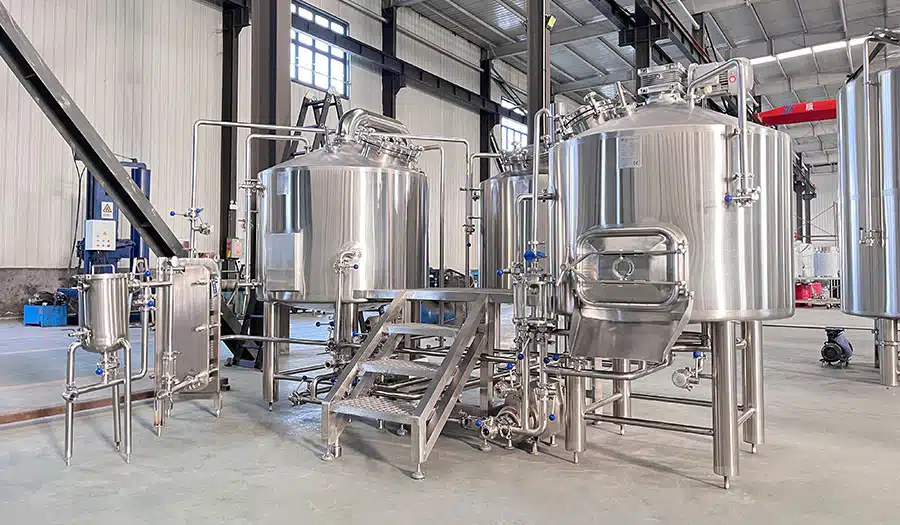
FAQs
F: Was ist der Unterschied zwischen kommerziellen und Nano-Brauereianlagen?
A: Nano-Anlagen sind kleiner, oft modular aufgebaut und ideal für Testchargen oder Kleinstbrauereien. Kommerzielle Anlagen sind größer (1000 l und mehr) und auf Größe und Effizienz ausgelegt.
F: Wie lange hält die Ausrüstung einer Brauerei?
A: Qualitätsbehälter aus Edelstahl halten bei richtiger Pflege 25-30 Jahre. Regelmäßiges Reinigen und Auswechseln verschlissener Teile verlängert die Lebensdauer um 5-7 Jahre.
F: Kann ich gewerbliche Brauereianlagen leasen?
A: Ja, viele Anbieter bieten Leasing an. Erwarten Sie $3000-$10.000 monatlich für mittelgroße Brauereien.
F: Auf welche Zertifizierungen sollte ich achten?
A: NSF- und ISO-Zertifizierungen bedeuten, dass Ihre Geräte den Sicherheits- und Hygienestandards entsprechen. Zertifizierte Geräte können die Versicherungskosten senken.
Tabelle mit Fallstudien aus der realen Welt
| Brauerei | Upgrade der Ausrüstung | Ergebnis | Zum Mitnehmen |
|---|---|---|---|
| Trillium-Brauerei | Automatisiertes Sudhaus | 50% schnellere Chargenzeiten | Automatisierung beschleunigt die Produktion |
| Odell-Brauerei | Wild Goose Konservenlinie | Halbierte Verpackungszeit | Schnelleres Verpacken = mehr Umsatz |
| Lagunitas | Solar, Glykolkühlung | 40% Energieeinsparungen | Grüne Investitionen zahlen sich aus |
| Mikrobrauerei X | Modulares Nanosystem | 35% aus Anlaufkosten | Modularität = erschwingliches Wachstum |
Checkliste: 10 Fragen an den Lieferanten von Brauereianlagen
- Welche Garantien werden gewährt?
- Wird die Unterstützung auf lokaler oder globaler Ebene angeboten?
- Sind Upgrades einfach und erschwinglich?
- Ist das Gerät konformitätszertifiziert (NSF/ISO)?
- Kann ich später bei Bedarf automatisieren?
- Ist die Ausbildung des Personals inbegriffen?
- Wie wird die Wartung gehandhabt?
- Sind Ersatzteile immer auf Lager?
- Helfen Sie bei der Gestaltung von Brauereien?
- Kann ich Betriebsbeispiele besichtigen?
Warum mit bewährten Herstellern zusammenarbeiten?
In einer Welt, in der sich Bierstile und Kundenbedürfnisse ständig ändern, muss auch Ihre Brauereiausrüstung mit der Entwicklung Schritt halten. Ein Lieferant mit umfassender Erfahrung, Investitionen in Forschung und Entwicklung und einem weltweiten Support-Netzwerk kann Ihrem Unternehmen zu Erfolg und Wachstum verhelfen. Mit 15 Jahren Erfahrung im modernen Brauereiwesen, mehr als 1.000 gebauten Brauereien und einem umfassenden Serviceangebot von der Planung bis zum Kundendienst ist Micet eine zuverlässige Wahl für Brauer, die sich keine Sorgen machen wollen.
Erkunden Sie die Vorteile einer eigens errichteten Brauerei auf unserer 300L Small Batch Brewery System Seite. Für größere Ambitionen, siehe die 30HL 5 Gefäße Gewerbliche Brauereianlagen. Und für die ultimative Innovation, entdecken Sie unsere automatisches Brühsystem für konsistente, skalierbare Ergebnisse.
Abschließende Überlegungen
Die Wahl der richtigen kommerziellen Brauereianlagen entscheidet über jede Charge, die Sie brauen, und über jeden Euro, den Sie verdienen. Konzentrieren Sie sich auf Qualität, Support, Skalierbarkeit und Innovation Ihres Ausrüstungspartners. Das gibt Ihnen Sicherheit, einen reibungslosen Betrieb und zufriedene Kunden.
Schnellübersichtstabelle:
| Am besten für | Micet-Lösungen |
|---|---|
| Nano-/Mikrobrauereien | 300-1000L, modulare Brühsysteme |
| Mittelgroße Brauereien | Kundenspezifische 2/3/4-Schiffsaufbauten, starker Kundendienst |
| Große kommerzielle | Automatisierte, energieeffiziente, konforme Sudhäuser, globale technische Hilfe |
Das Engagement von Micet für Spitzenleistungen, Kundenbetreuung und Innovation hilft Brauereien auf der ganzen Welt, erstaunliche Ideen in unvergessliche Biere zu verwandeln.
Referenzen:
Alle Statistiken, Trends und Best Practices in diesem Artikel beruhen auf weltweit anerkannten Branchendaten, Marktberichten und Praxisbeispielen von Spitzenbrauereien.
Für weitere Informationen:
Brauereianlagen Einblicke 2024
Globale Marktgröße
$20,8B → $28,4B bis 2030
Energieeinsparung
20-30% Ermäßigung
Abfallreduzierung
12% mit Automatisierung

